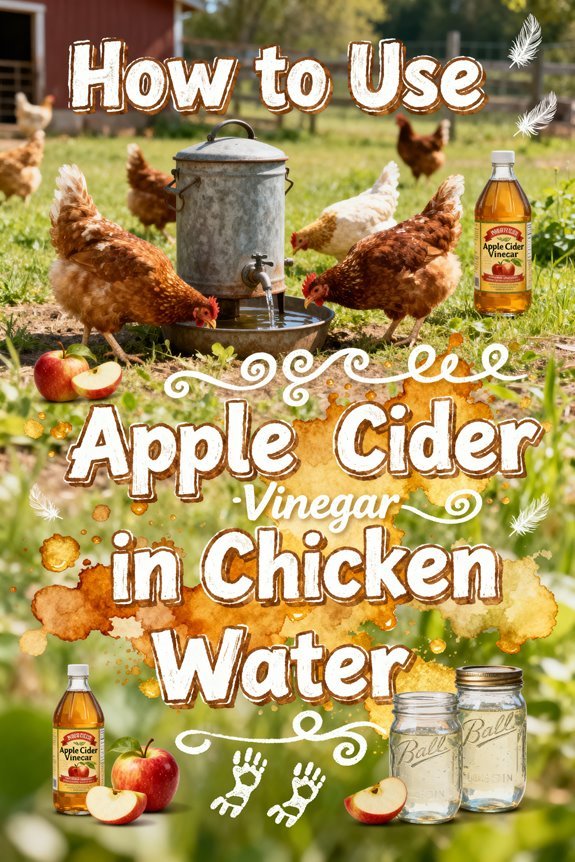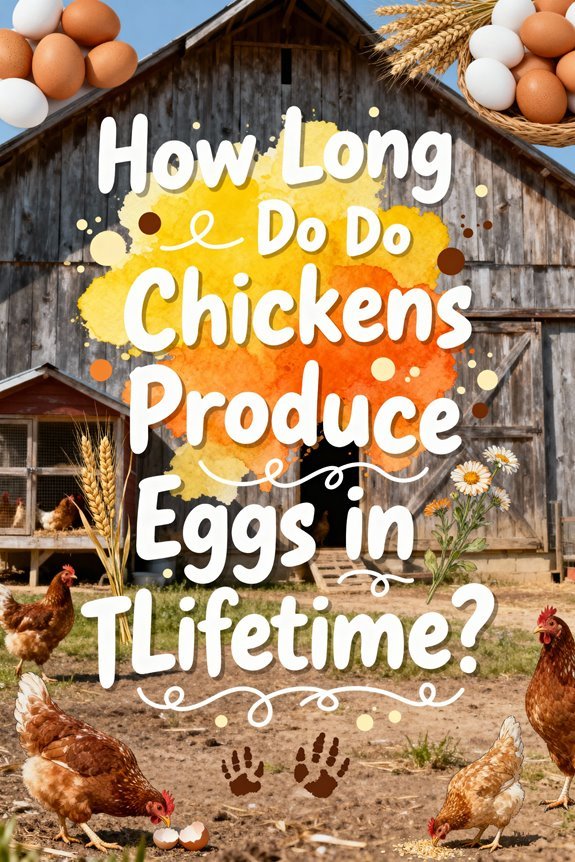Can You Feed Split Peas to Chickens? Benefits & Safety Tips
You can safely feed split peas to your chickens as a nutritious supplement, providing them with 23-25% protein content and essential amino acids that support egg production. To maximize benefits, cook or soak the peas for 4-12 hours to enhance digestibility and neutralize harmful compounds. Limit split peas to 10% of their total diet and introduce them gradually, 1-2 times weekly. Understanding proper preparation methods and monitoring guidelines will guarantee your flock thrives with this protein-rich addition.
Understanding Split Peas as Chicken Feed
Three key aspects define split peas as a viable chicken feed ingredient: their nutritional content, processing requirements, and effects on gut health.
When incorporating split peas into chicken diets, you’ll need to guarantee proper processing through fine milling or grinding, as chickens can’t effectively digest coarse husks. Soaking and sprouting enhance nutrient bioavailability while reducing anti-nutritional factors. Both green and yellow varieties provide essential lysine and complement cereal-based feeds effectively. Split peas should make up no more than 10% of a chicken’s total diet to maintain balanced nutrition. Raw split peas can be safely offered to chickens, though cooked varieties are often better digested.
Research shows split peas positively modulate gut microbiota, supporting intestinal health and nutrient absorption. They maintain microbial homeostasis and stable fermentation processes in the digestive tract. Adding fresh oregano to split pea feed can enhance its health benefits by providing natural antibiotic properties. To maximize these benefits, you’ll need to introduce split peas gradually and guarantee they’re contaminant-free. When properly processed, they contribute to enhanced disease resistance and improved feed efficiency.
Nutritional Value for Your Flock
Split peas deliver essential macronutrients and micronutrients that support your flock’s health and productivity. With 23-25% protein content, they serve as a valuable supplement among protein sources, though they contain less protein than soybean meal (44%) or canola meal (36%). You’ll find they’re rich in B-complex vitamins and minerals like magnesium, potassium, and calcium, supporting bone development and muscle function.
The fiber content enhances digestive health by promoting gut motility and maintaining beneficial intestinal microbiota. Complex carbohydrates provide sustained energy release, while the moderate fat content aligns with poultry dietary requirements. Quality commercial feeds containing essential amino acids ensure optimal nutrition when combined with split pea supplements. In nutrient comparison studies, split peas demonstrate particular value for laying hens, contributing to eggshell formation through their calcium content and supporting overall egg production through their protein profile. Offering oyster shell supplements alongside split peas can further enhance calcium absorption for stronger eggshells. For optimal nutrition, split peas should be limited to 10% of total diet when feeding twice weekly.
Safety Guidelines and Precautions
While split peas offer substantial nutritional benefits, implementing proper safety measures protects your flock’s health when incorporating them into feed programs. For safe feeding, always cook split peas thoroughly and soak them before serving to neutralize harmful lectins and phytic acid. Limit portions to 10% of their total diet and feed only 1-2 times weekly as a supplement. Start with a small test amount to gauge acceptance before investing in larger quantities.
Store split peas in cool, dry conditions to prevent mold growth, and inspect regularly for signs of spoilage. Verify your chickens have access to fresh water and grit to support digestion. Practice careful digestive monitoring after introducing split peas, watching for bloating or diarrhea. If adverse reactions occur, reduce portions or discontinue feeding. Maintain variety in their diet by balancing split peas with grains, vegetables, and commercial feed.
Preparing Split Peas for Chickens
Proper preparation of split peas greatly enhances their digestibility and nutritional value for chickens. You’ll need to choose between two primary preparation methods: soaking techniques and sprouting methods. For soaking, immerse the peas in water overnight or up to 48 hours, then rinse thoroughly before feeding to reduce antinutrients and soften the texture. Just as chickens experiencing natural molting patterns may eat less during their feather transition phase, they might take time to adjust to new foods in their diet.
For sprouting, soak the peas initially, then transfer them to a tray where you’ll keep them moist with daily rinses. Wait for visible root growth and small green shoots to appear, indicating ideal nutrient development. This process increases vitamin content, particularly C and B-complex vitamins, while improving protein availability. You can set up your sprouting operation in a temporary greenhouse van to maintain optimal growing conditions. You can offer the prepared peas separately or mix them with other grains, but always introduce them gradually to monitor your chickens’ acceptance.
Health Benefits for Layer Hens
Once you’ve prepared split peas correctly for your chickens, their nutritional benefits become readily available to support layer hen health. The 20-25% protein content enhances egg production and muscle development, while essential amino acids like lysine improve overall egg quality. You’ll find that split peas serve as an excellent non-GMO alternative to soy protein in your flock’s diet. Like the hardy pea combs of Ameraucana chickens that resist frostbite, split peas are a resilient feed choice for your birds.
The high fiber content promotes digestive health by fostering beneficial gut bacteria and improving nutrient absorption. Split peas deliver vital B vitamins, iron, and minerals that support metabolic functions and immune response. Their balanced nutrient profile contributes to stronger eggshells, better yolk quality, and sustained laying cycles. When combined with organic grains, split peas provide comprehensive nutrition that aligns with natural poultry feeding practices. The combination of zinc and Vitamin C strengthens your hens’ immune system, while fiber helps maintain gut stability during stressful periods like molting. Remember to keep split peas as 10% of daily diet to maintain proper nutritional balance.
Proper Feeding Methods and Amounts
Successfully introducing split peas into your chickens’ diet requires careful attention to quantity and preparation methods. You’ll need to control portions by limiting split peas to 10% of their total diet, offering them 1-2 times weekly. Before feeding, soak the peas for at least 12 hours or cook them to enhance digestibility. Using whole grain options promotes better nutrition retention compared to processed feeds.
For ideal feeding frequency, incorporate split peas gradually while monitoring your flock’s response. You can mill the peas finely and mix them with grains like oats or barley to maintain balanced nutrition. When formulating feed, maintain energy levels around 10 MJ/kg and combine with mineral supplements. If you notice selective eating or digestive issues, adjust the preparation method or reduce the quantity. Always provide fresh water and grit to support proper digestion.
Signs of Digestive Issues to Watch For
When introducing split peas to your chickens’ diet, you’ll need to monitor them closely for signs of digestive distress. Effective digestive monitoring involves watching for specific symptoms that could indicate feeding issues. Look for changes in droppings, particularly diarrhea or bloody stools, as these suggest intestinal inflammation or infection. Just as humans can experience digestive enzyme deficiencies, chickens may also have difficulty processing certain foods.
Through careful symptom recognition, you can identify crop-related problems, which may manifest as a swollen, squishy crop that doesn’t empty overnight. Watch for behavioral changes like reduced appetite, lethargy, or a hunched posture with ruffled feathers. Signs of dehydration, including pale combs and excessive panting, require immediate attention. If you observe persistent vomiting, severe bloating, or multiple birds showing acute distress, consult a veterinarian promptly, as these symptoms could indicate serious digestive complications.
Best Practices for Incorporating Split Peas
The proper incorporation of split peas into your chickens’ diet requires careful attention to preparation methods and feeding protocols. You’ll need to soak the peas for 4-12 hours or cook them to enhance digestibility and nutrient availability. For ideal feeding frequency, limit split peas to 30% of the total feed ratio while maintaining nutritional balance through varied ingredients. Avoid using dried peas as they are harder for chickens to process and less palatable.
Mix prepared split peas with regular feed and scatter them in shallow trays to encourage consumption. You’ll want to introduce them gradually and monitor your flock’s acceptance. Support digestion by providing fresh water and grit alongside the peas. Store split peas in a cool, dry place and always inspect for mold before feeding. Consider sprouting as an alternative preparation method to boost protein content and improve palatability.
Alternative Ways to Serve Split Peas
Innovative methods of serving split peas can considerably enhance your chickens’ nutritional intake and feeding engagement. You’ll find multiple preparation techniques to optimize nutrient absorption and palatability.
Sprouted peas offer increased protein content and beneficial enzymes, while frozen peas provide a convenient alternative that encourages natural foraging. You can cook peas to improve digestibility and reduce anti-nutritional factors, ensuring they’re cooled before serving. For enhanced activity, try tossing peas throughout the coop to stimulate hunting behaviors and exercise. Soaking in hot water can make dried peas more appealing to your flock. Similar to bite-sized celery pieces that prevent choking hazards, peas should be properly sized for safe consumption. Like commercial layer feed, split peas can provide essential amino acids for optimal egg production.
Consider grinding or micronizing peas for easier consumption, particularly beneficial for selective eaters. This method creates smaller particles that blend seamlessly with regular feed while reducing choking risks. You’ll often notice higher consumption rates with ground peas compared to whole varieties.





